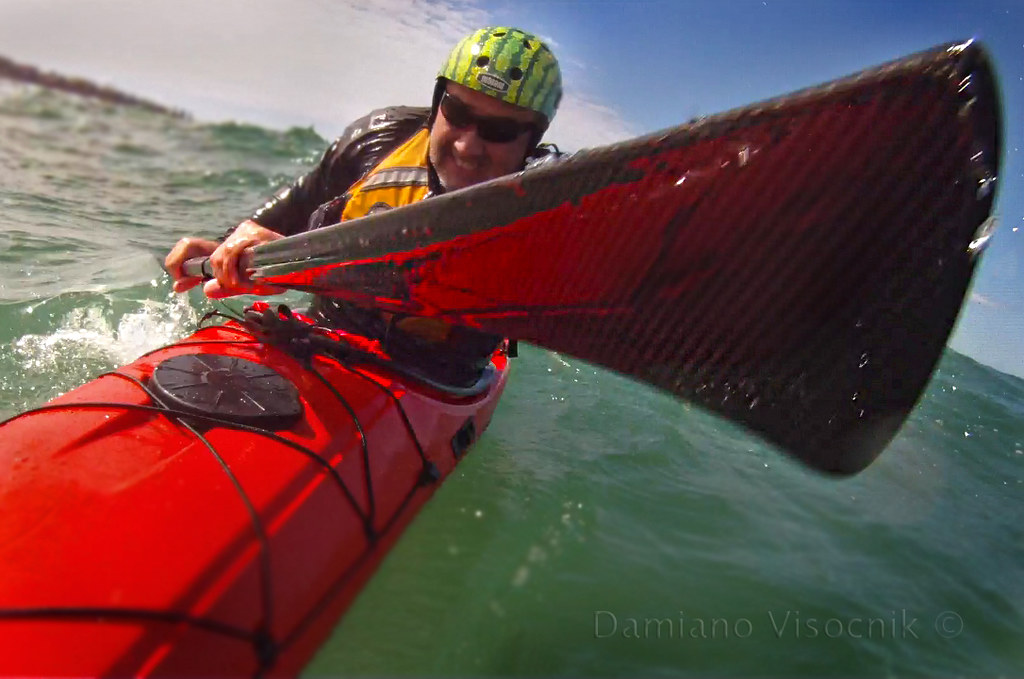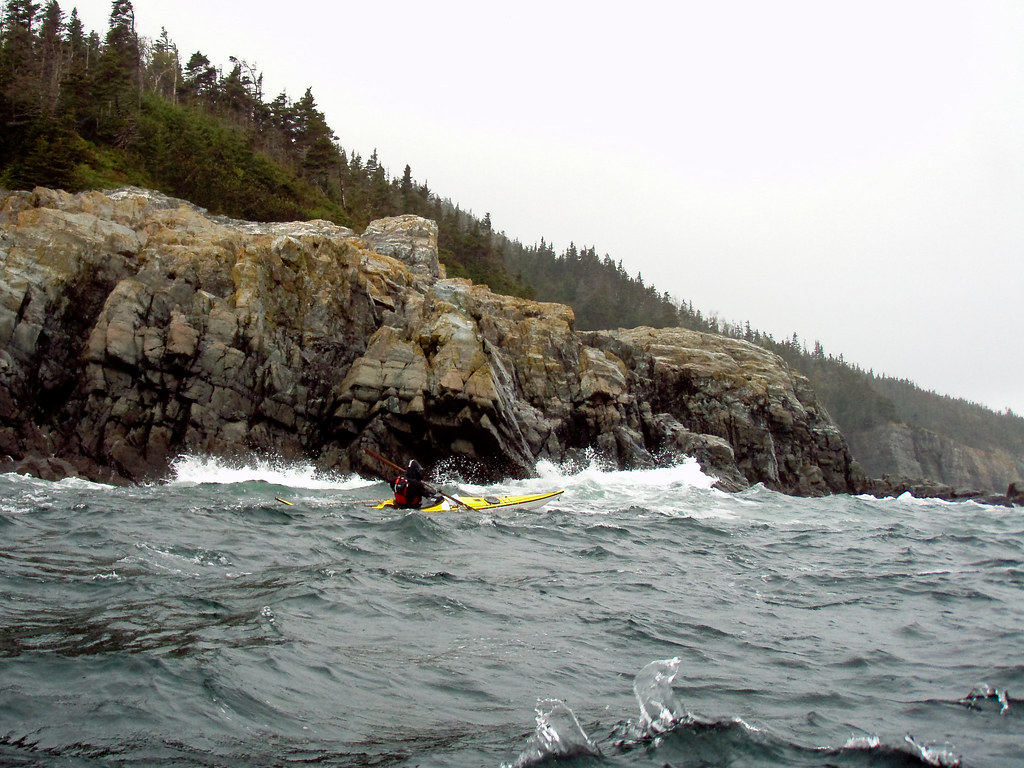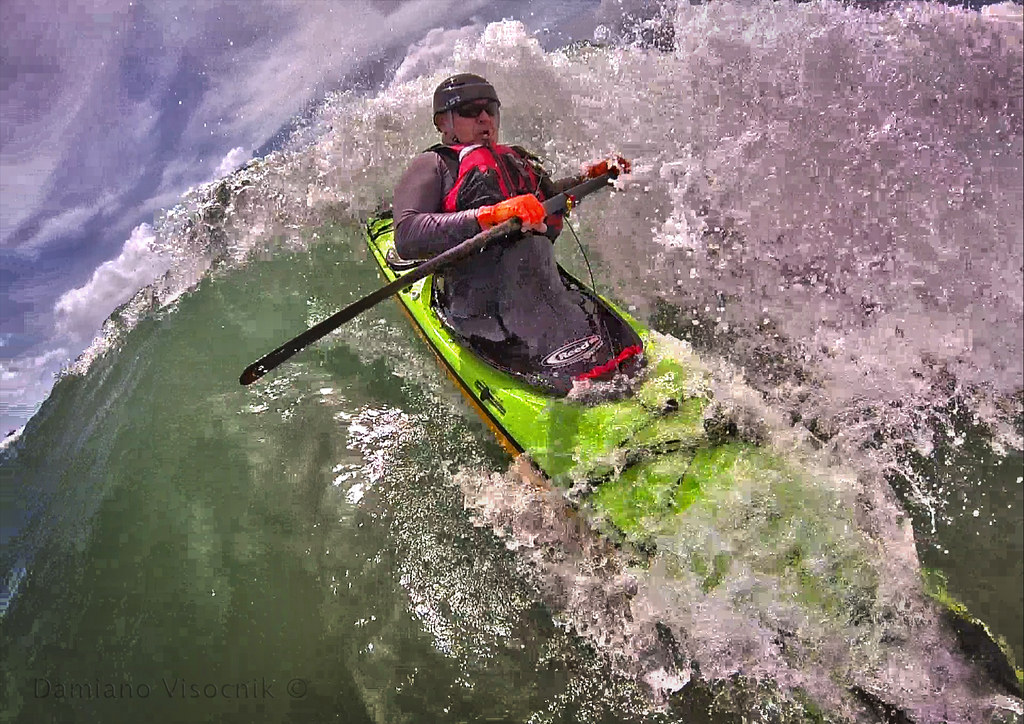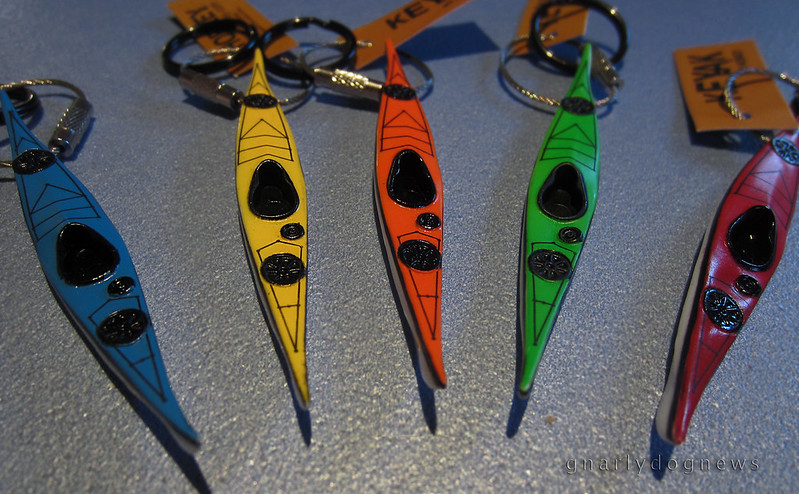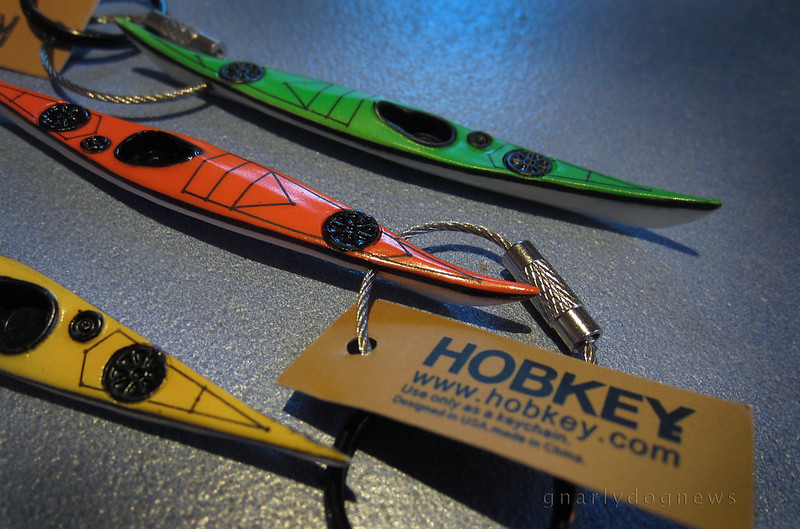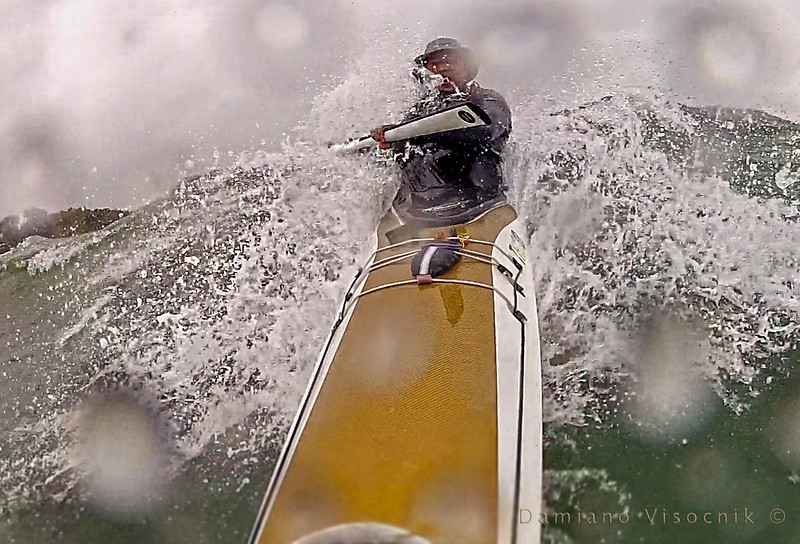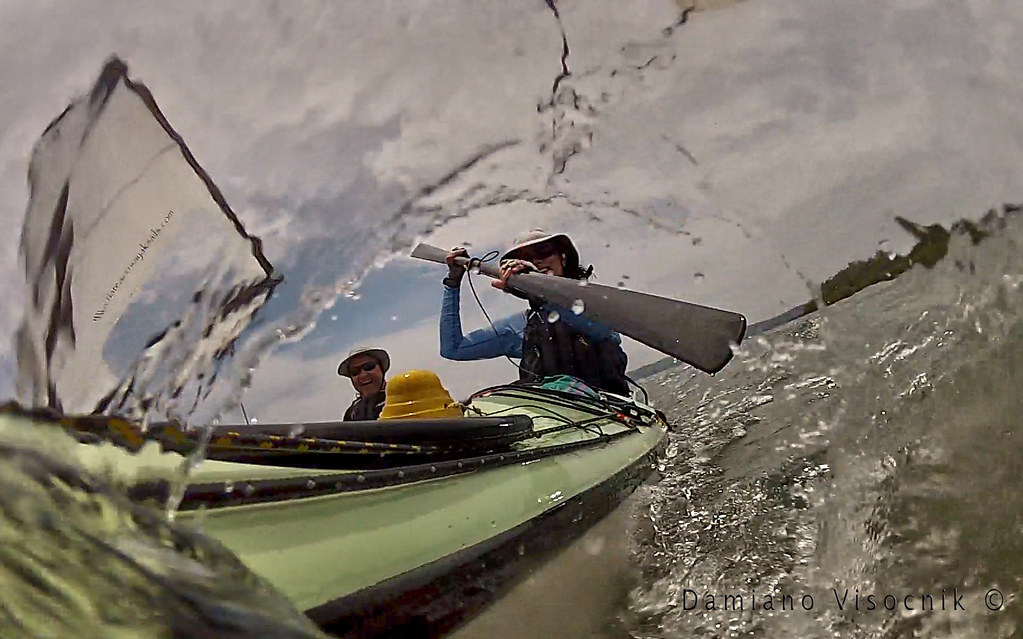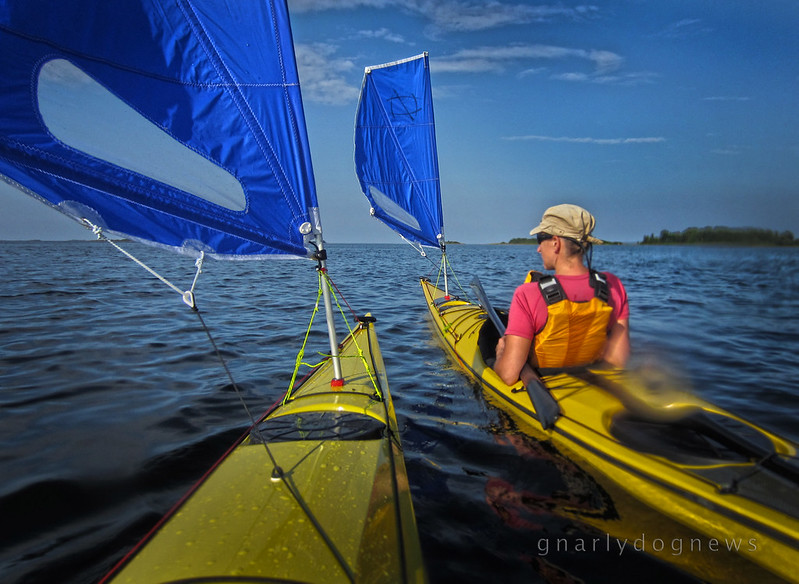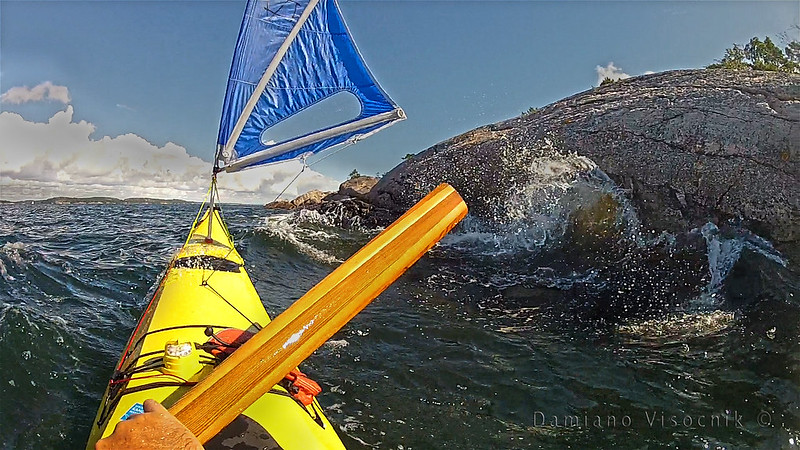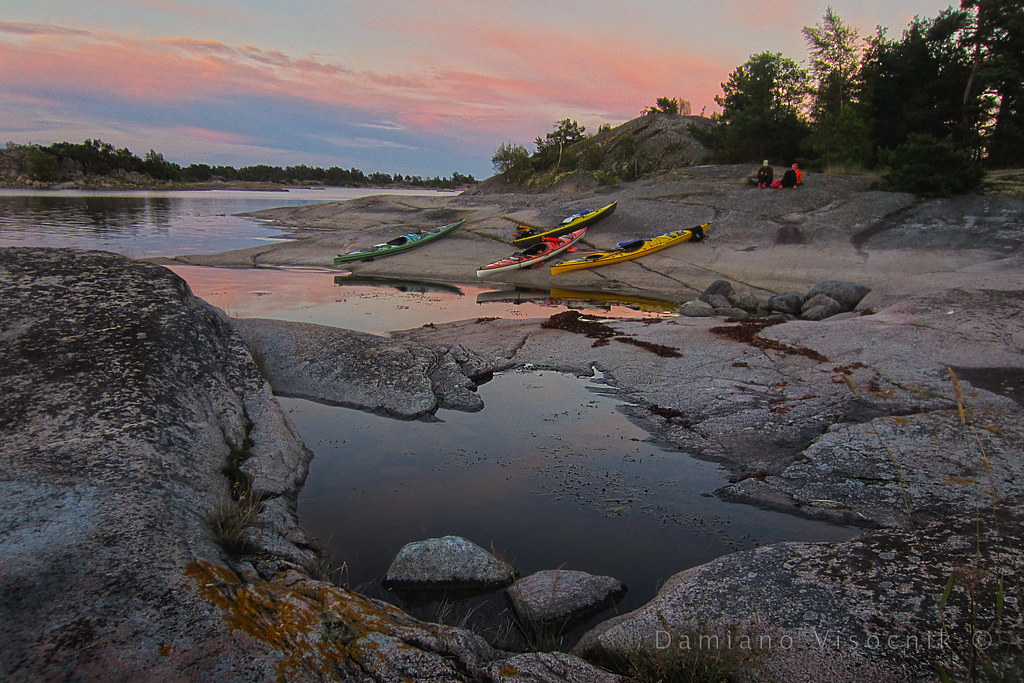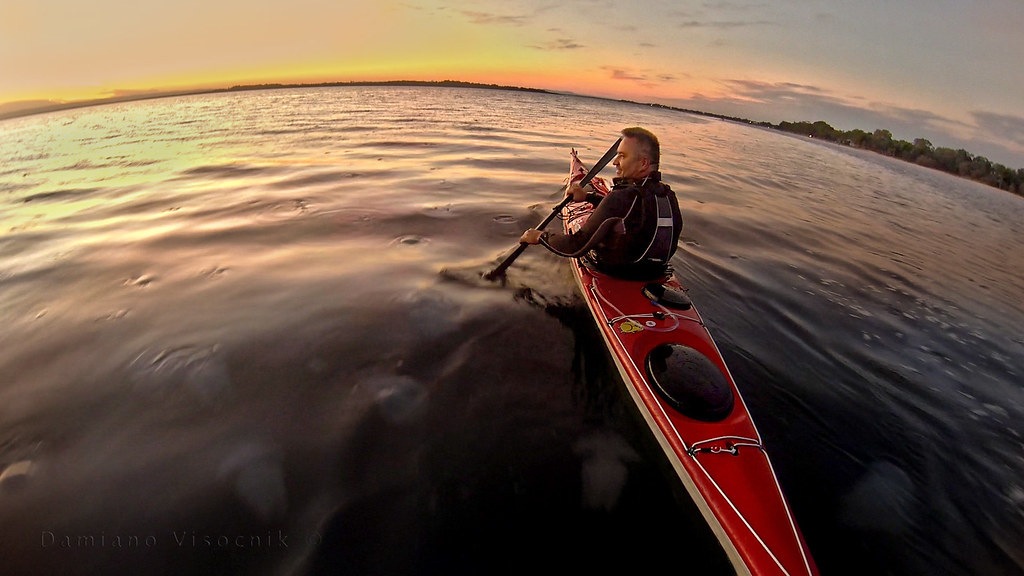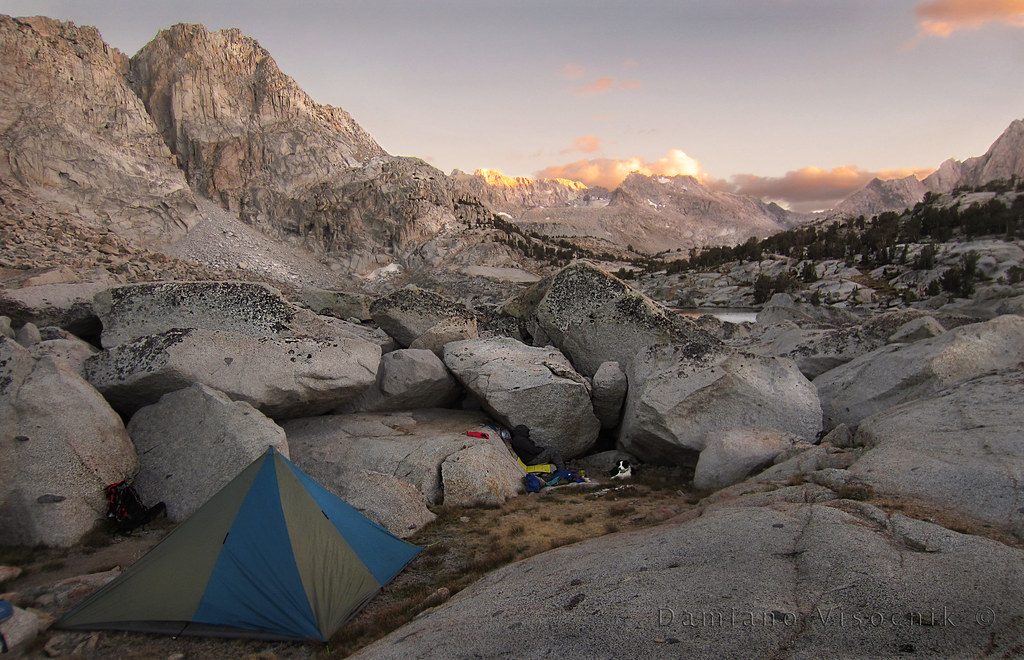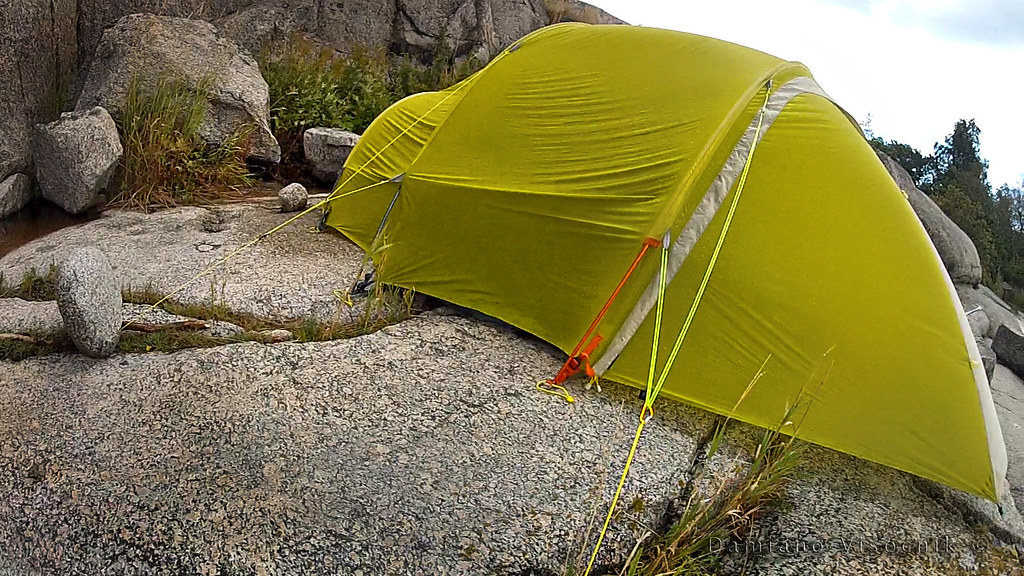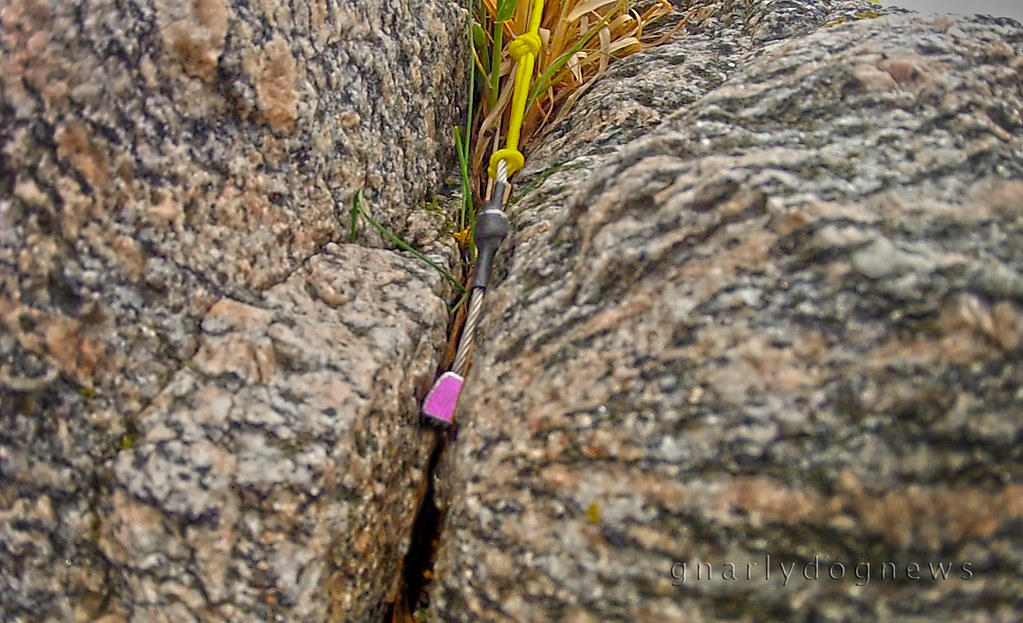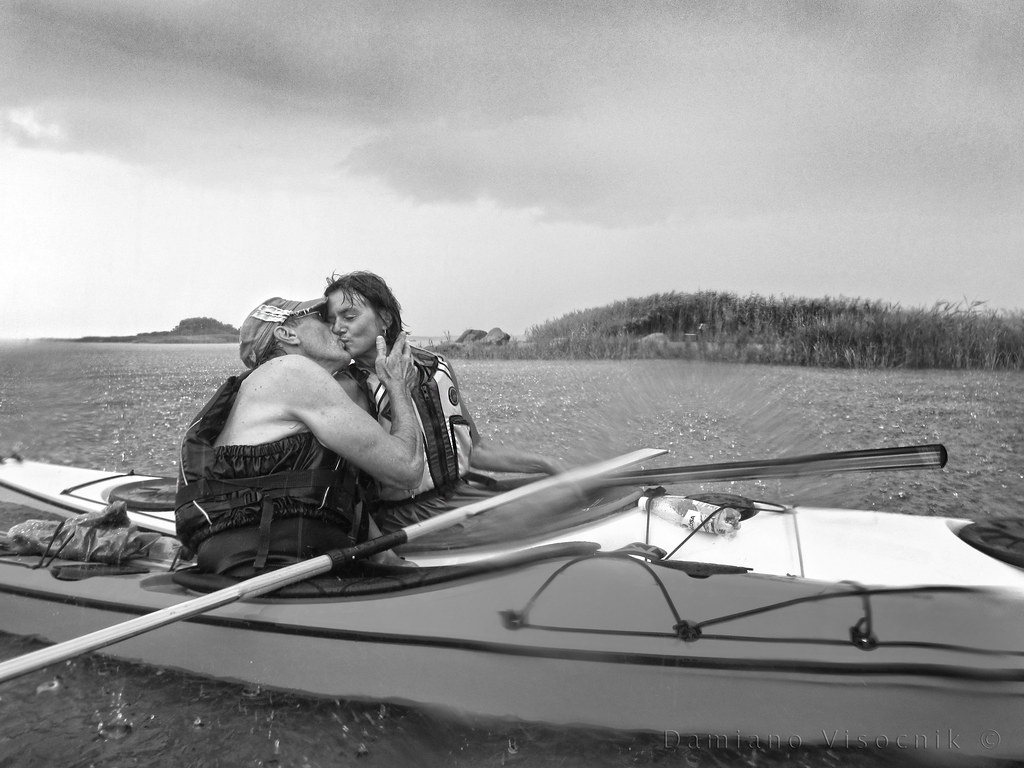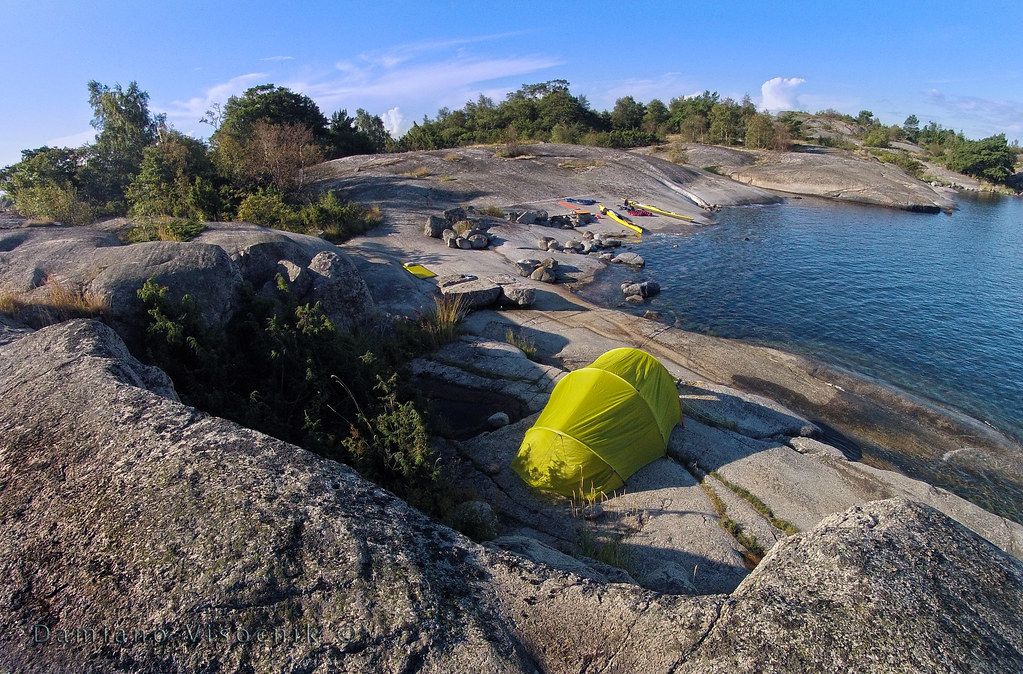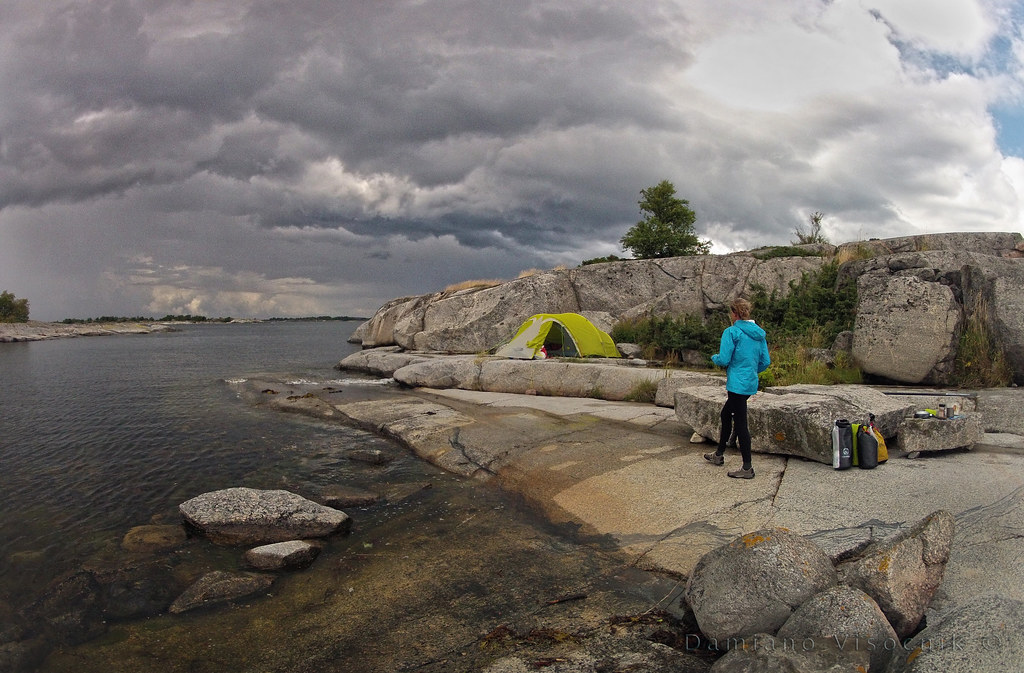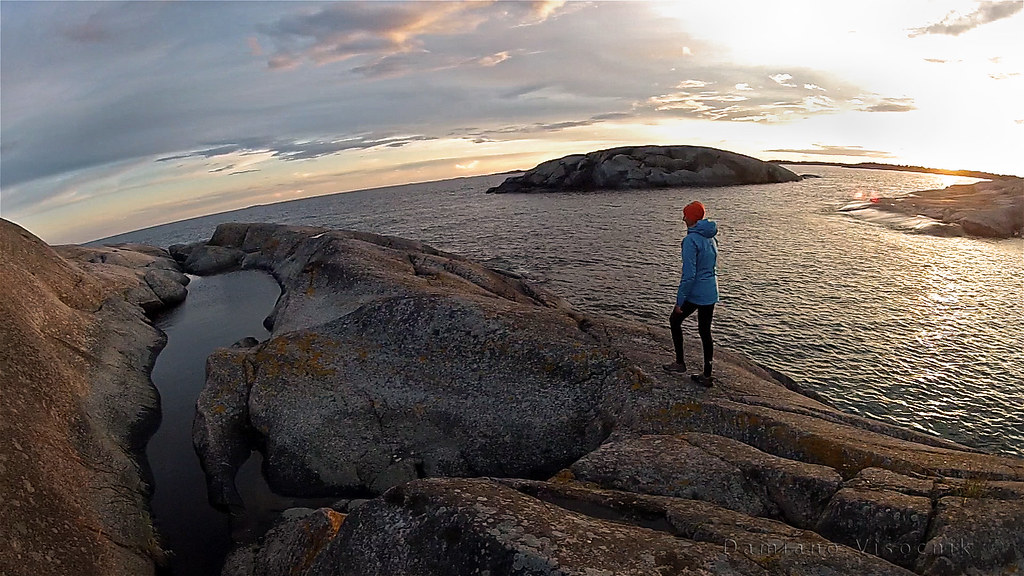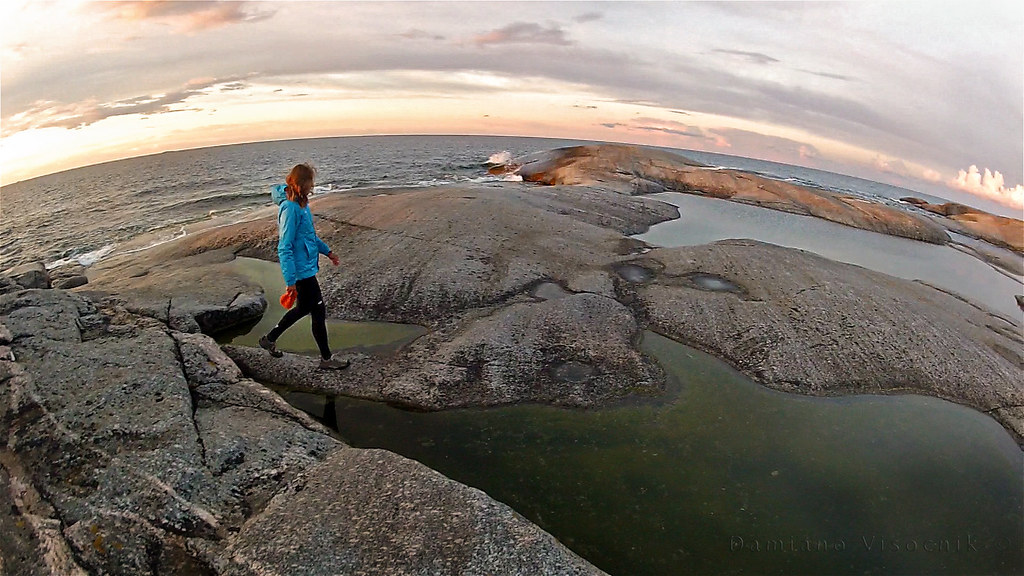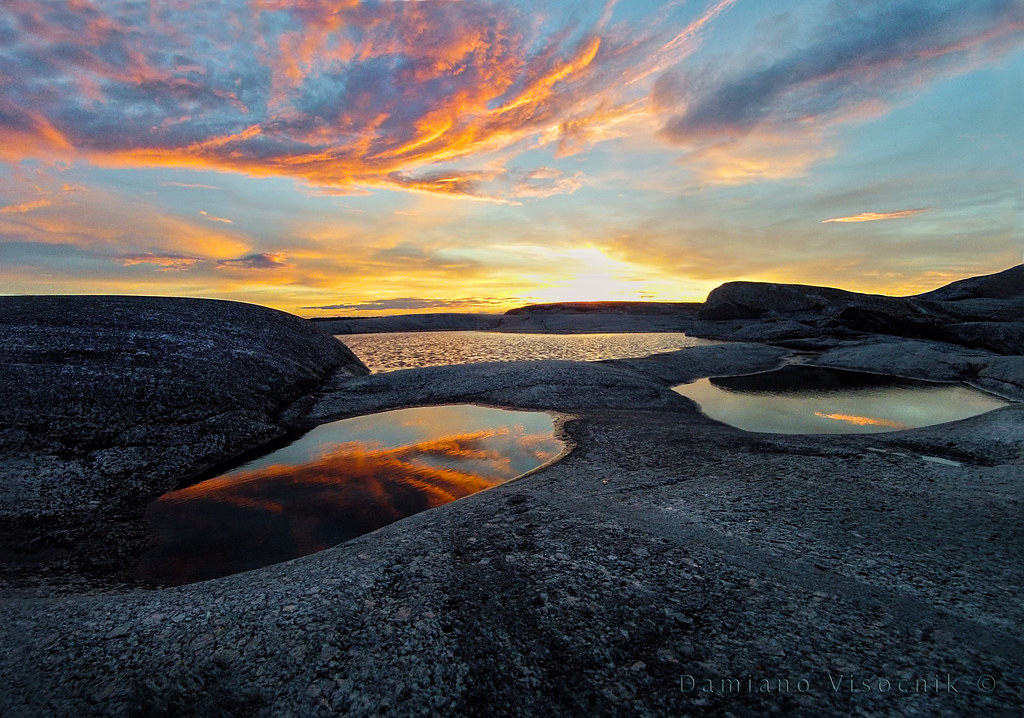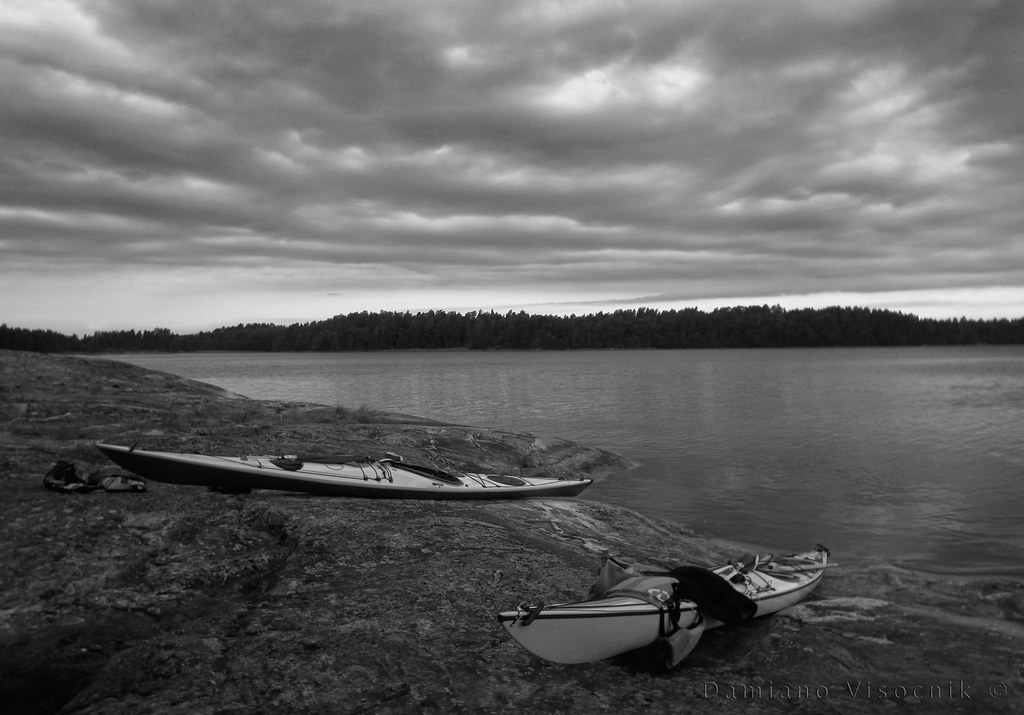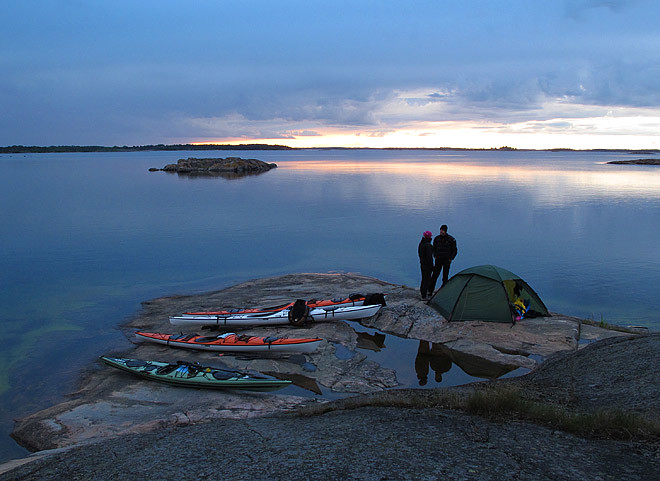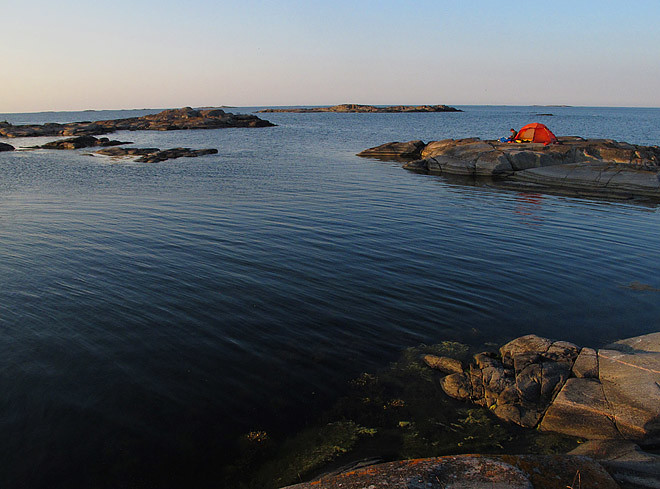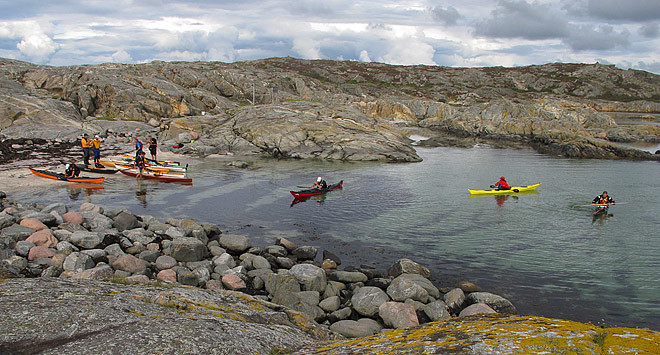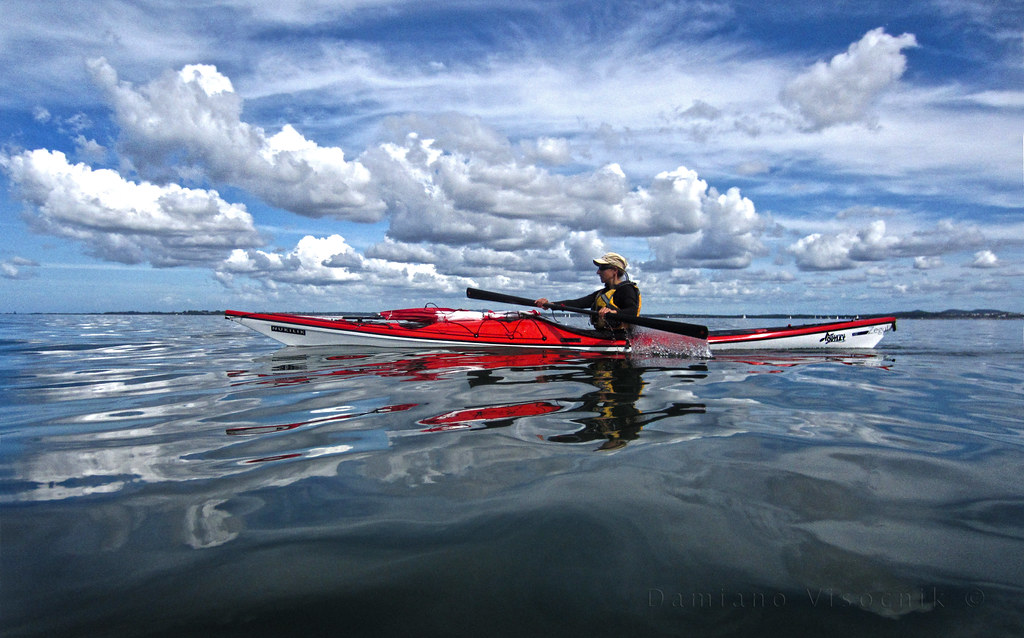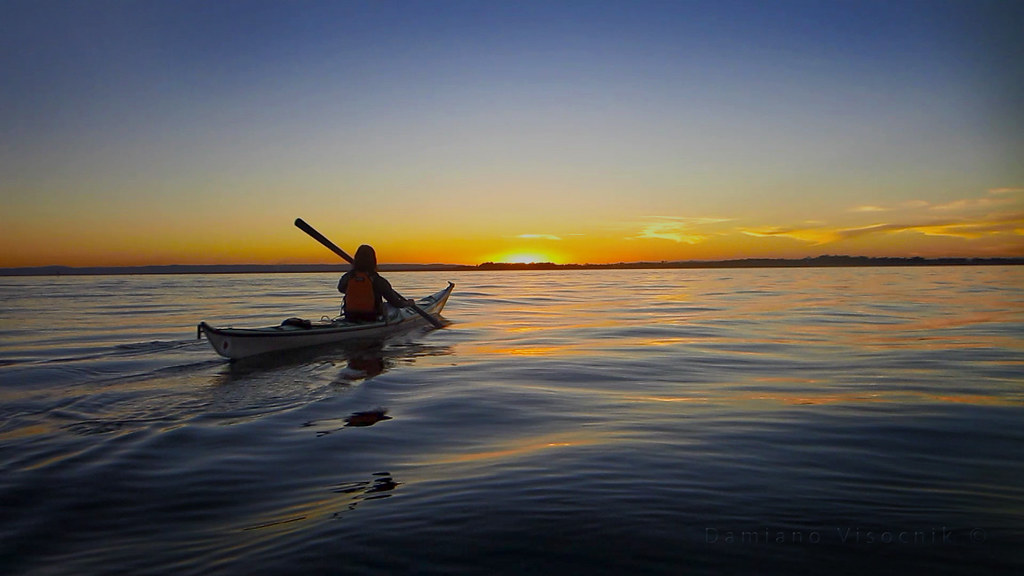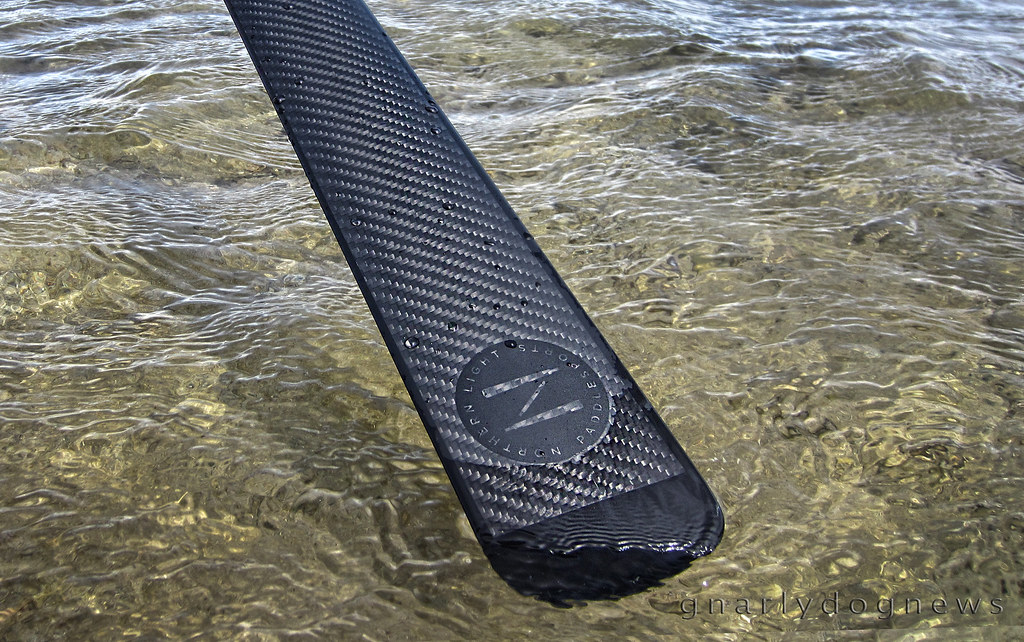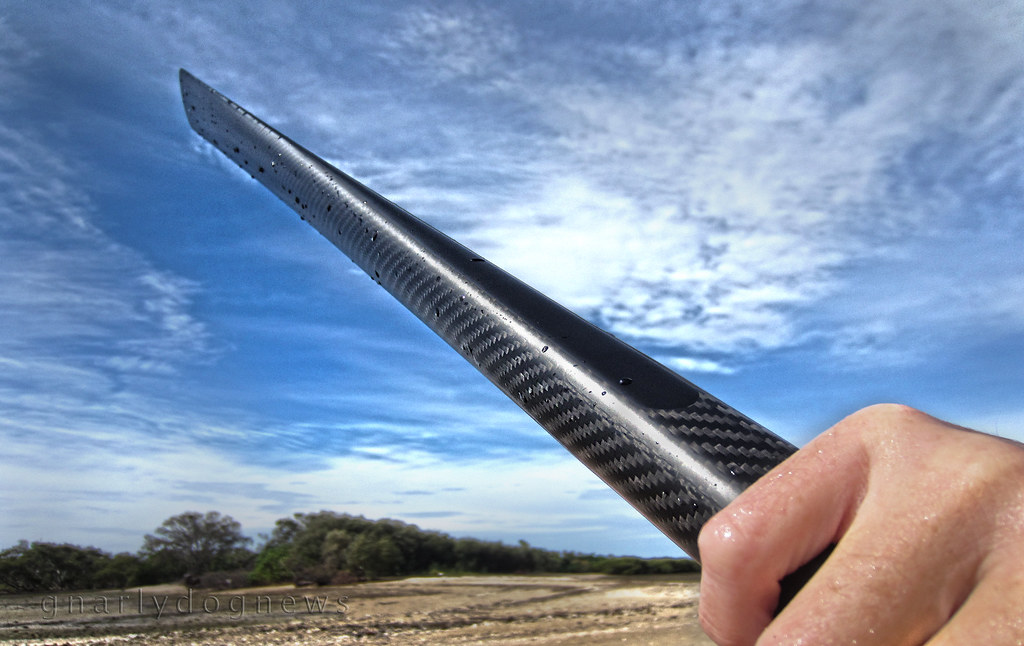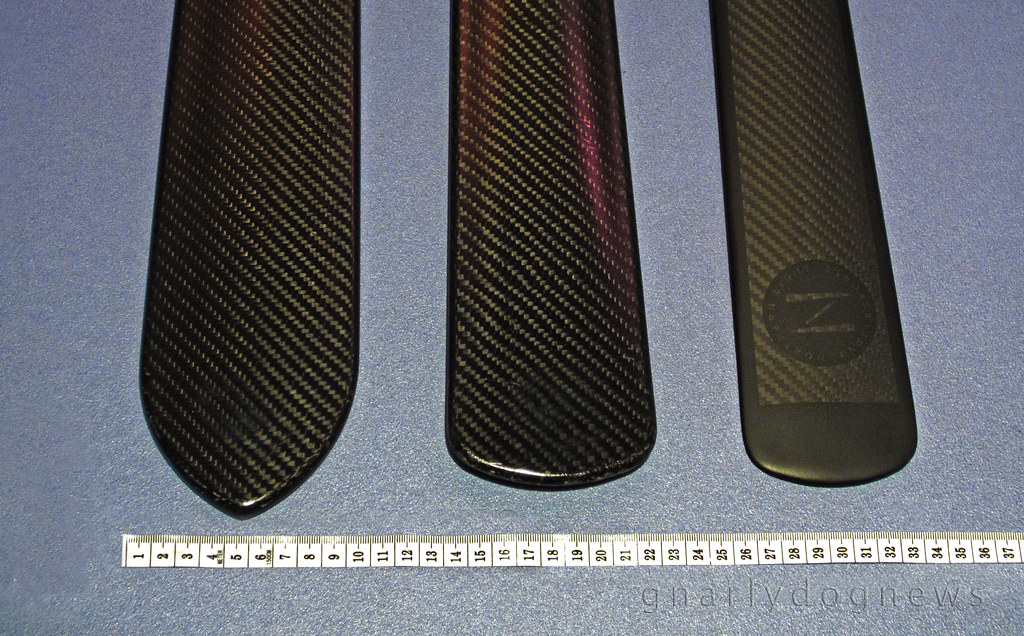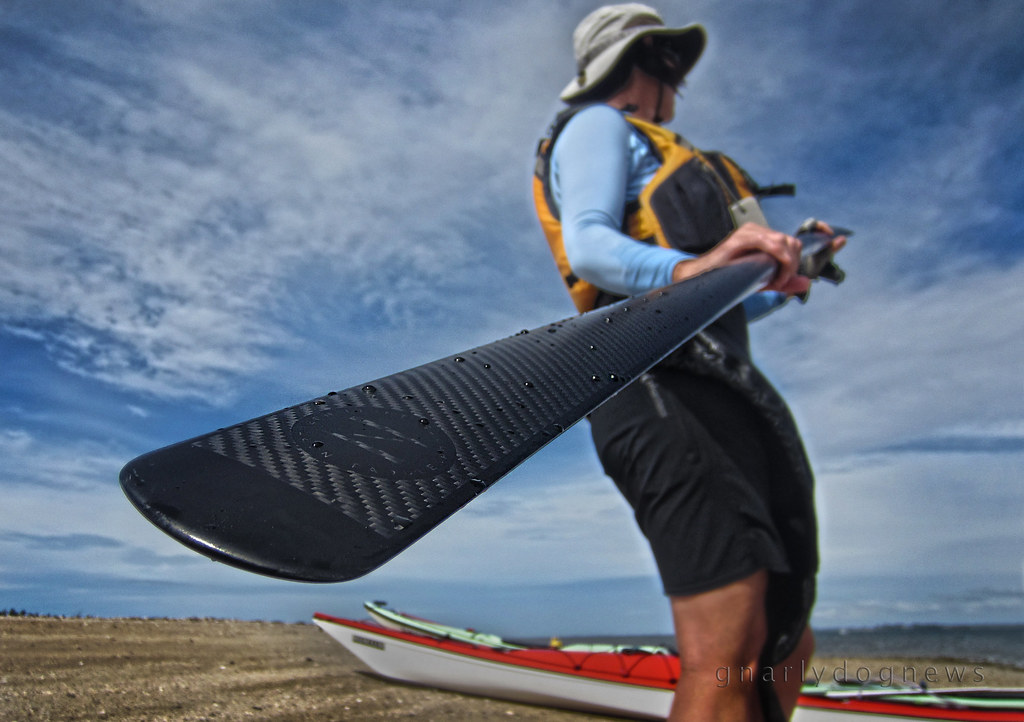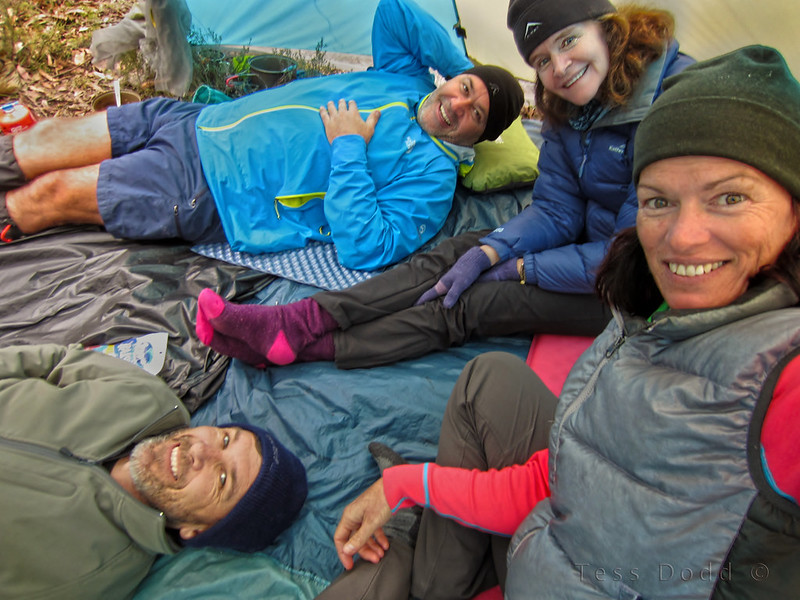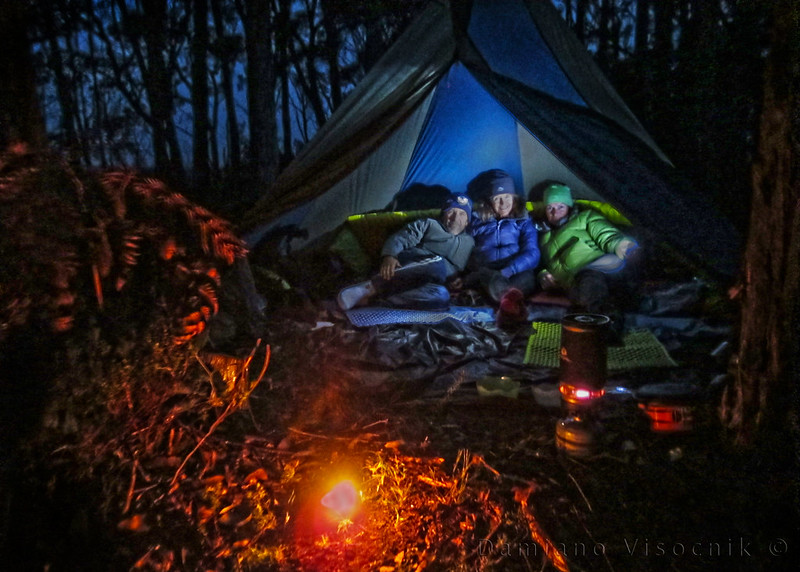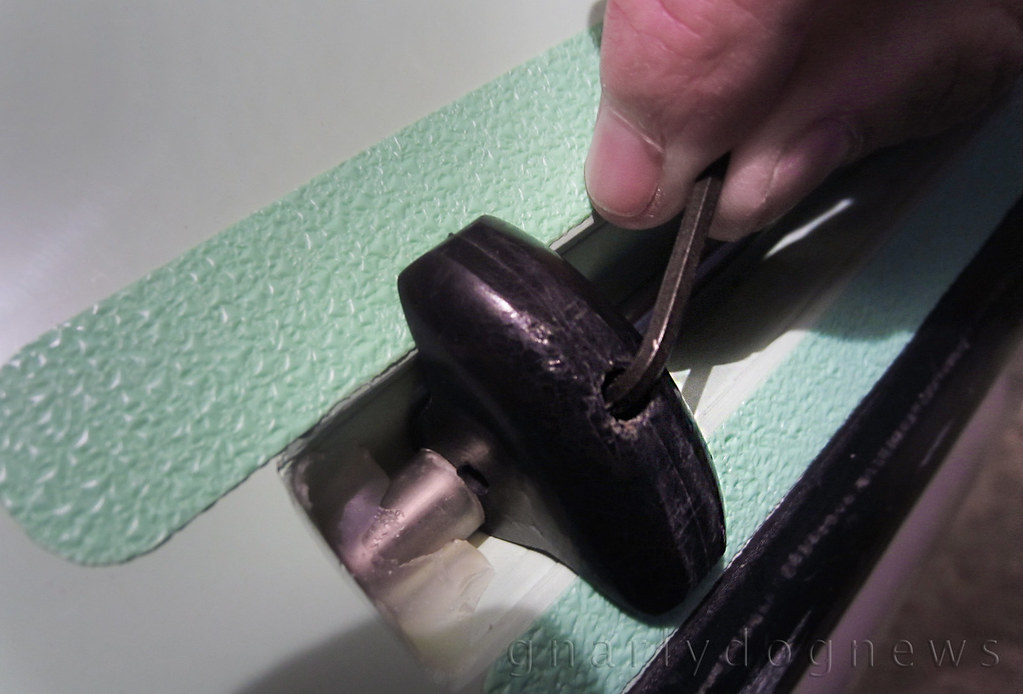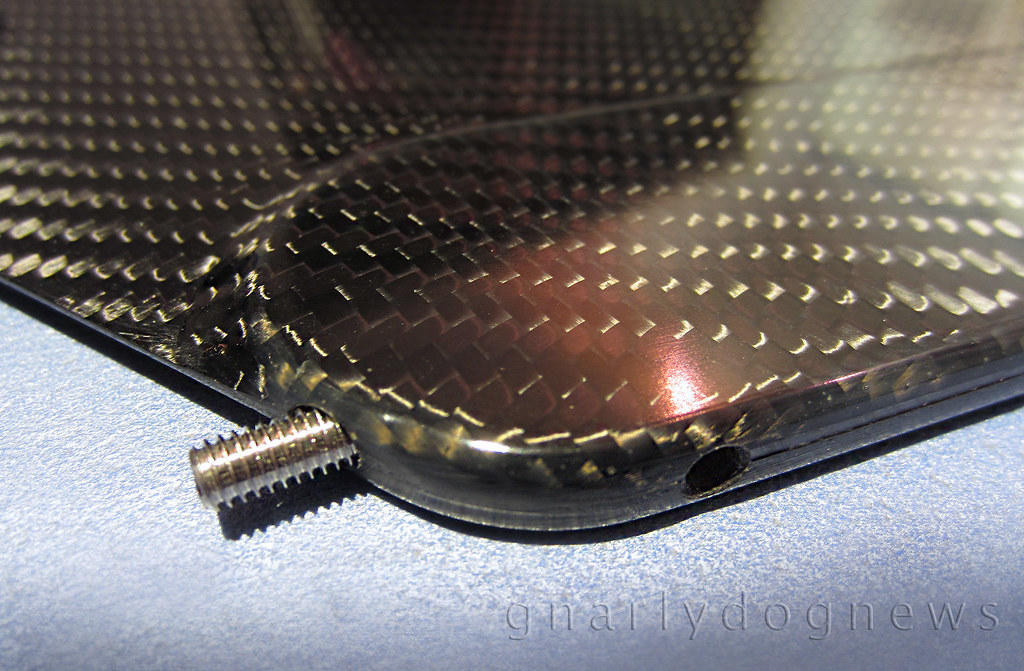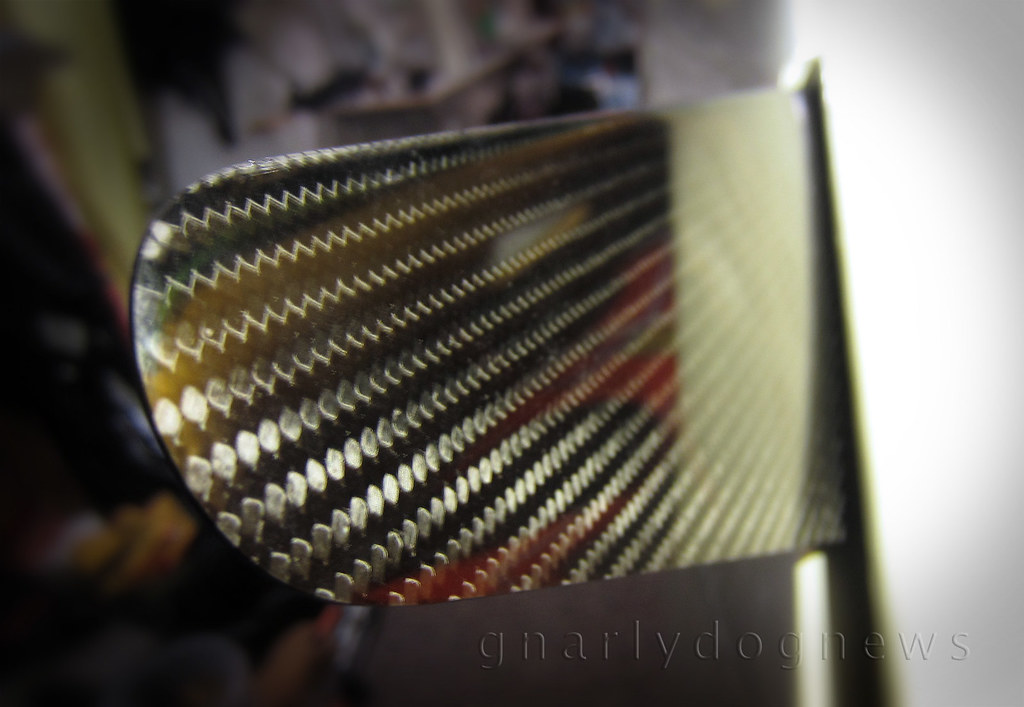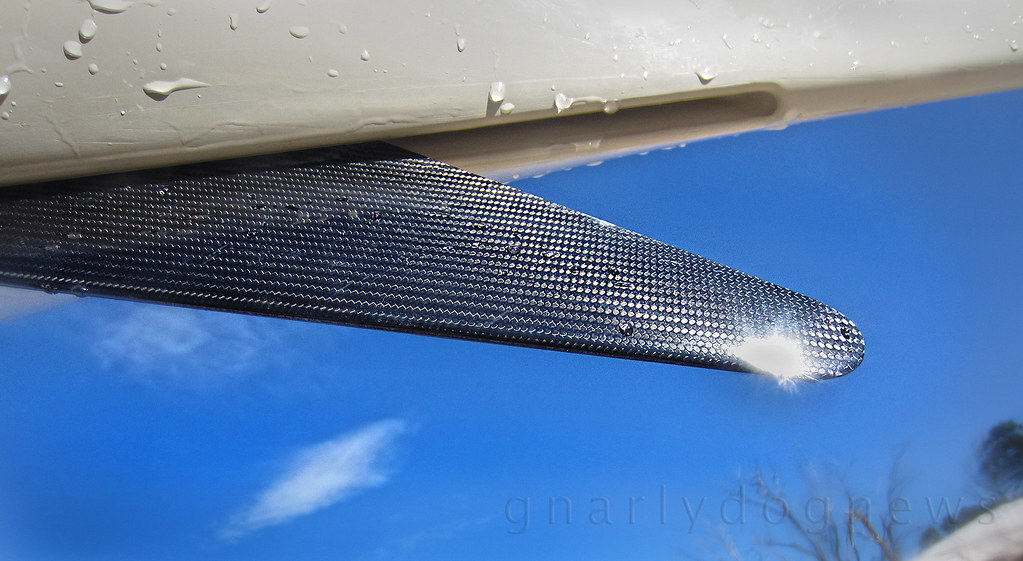.
A debate rivaled only by the skeg-versus-rudder one has been nagging a few proponents from both camps: the diminutive minority of Greenland paddle users and the more popular wing ones.
There have been a few strong opinions over the last couple of months about the power and versatility (or lack of) of Greenland paddles.
Comments from both camps, (actually all three including Euro style) appeared on Forums and a few misconceptions remain.
Photo: Doug Simpson
Greenland paddles are deemed positively inferior by some paddlers when it comes to speed (among other things) with their supporting evidence being the measured speed (fact).
However we often forget that performance can be a subjective thing where one might find a tool better than the other for his/her skill level, strength and style of paddling.
The drive to categorically dismiss a paddle as inferior is often the erroneous desire to emulate the "big" guys and acquire the very same tools that their heroes use.
Often however these specialized tools might not fit the casual approach to paddling that so many kayakers have, leading to disappointing results.
As disappointment seems a hard reality to accept I see too often persistence with a paddle that clearly does not fit the user and his/her style of kayaking.
The perception that a tool alone was going to make a marked difference and make an average paddler a faster/more skilled one is way too common in so many sports.
I have seen it in bicycle riding where wanting to emulate a hero the weekend warrior purchases the incredibly overbuilt downhill mountain bike rig to then only ride mellow fire roads, to skiers on the slope sporting very stiff and long skis designed for high speed close-track conditions being used for Sunday crowded intermediate slopes; there are examples in all sports.
I see the same happening with kayakers where a slow paddler wants to buy a longer kayak thinking that they will then be able to hold pace with a moderate-speed group of paddlers.
A shorter kayak in reality serves them better than a long one, for casual paddling.
A limited skilled kayaker buys a playful boat thinking that it will make him an ace in the rough waters; an arm paddler thinks she will improve her speed by using a wing paddle.
All these wonderful tools mean very little in the hands of paddlers that lack the skills to actually get the benefit from these tools.
Photo: Peter Sandström
Back to the Greenland paddle: why is it such a slow paddle?
It is only slow because it is used by slow paddlers using the wrong technique.
Years ago I gave the wing a go and I totally sucked with it: I spent a whole weekend with it to get an understanding.
I now laugh at myself thinking that I would be able to go much faster with my slow kayak using a wing paddle and understood nothing about its potential and proper use.
I also thought that spending a whole two days was sufficient time to get a feel for it when really it might take me years to actually get any decent results from such a specialized tool.
Like any new kayak that I acquire I understand that it takes time to learn the new balance points and quirky traits, the same applied when trying a Greenland paddle.
And despite a few years of exclusive use of the stick only now I am starting to get some results and I am confident using that paddle in all conditions.
So how could I discard that wing paddle so soon?
Photo: EKSydney
After some research I realized that wing paddles were designed for sprinting and while some kayakers are using them for general paddling I don’t have the same goals that they have.
I want a tool that is easy to use, reliable in the surf and gentle on the body.
It appears that the wing requires strong body rotation (something that I lack) high angle strokes (something that I don’t favour) and even the best paddlers deem them not that suitable for surf work (an environment that I enjoy).
But am I any slower by using a Greenland paddle? was the question that was bugging me and I had to find out.
Since I have been using the Greenland paddle my speed has not really increased (maybe it has but I don’t have a way to measure that) however I have not been falling behind when going on outings with my paddling buddies using Euro paddles.
One thing I do notice however is how relaxed my body feels compared to using Euro paddles, while paddling and afterwards; no more wrist and elbow pain.
Greg Stamer, a world class paddlers that uses both wing and Greenland paddles (and a strong advocate for Greenland paddles) says:
For short races, under 10 miles, in flat conditions, with a skilled and fit paddler, a wing paddle is usually faster. I paddle with both a GP and a wing. I find that I’m roughly two minutes faster per mile with a wing (unladen kayak, flat conditions). This however, is not a perfect comparison because my fastest kayaks (e.g. Epic 18x) are wide and deep as compared to my normal Greenland kayaks, and would benefit from a longer paddle and longer loom than I have now.
My shoulders can handle a Greenland paddle much longer than a large wing, but that might not be true of everyone.
In Iceland, Freya was often slightly faster with her large wing in calmer water. When it was rougher, I was slightly faster. We finished at the same pace and same time. I still feel much safer in rough conditions with a Greenland paddle in my hands.
Photo: Kam
But could I be really fast with a Greenland paddle if I wanted?
Could I hold pace to racers if I had a fast boat and got off the doughnuts and did some training instead of just playing in my kayak?
So what is the potential speed that I could achieve from a Greenland paddle?
If I took care of my canted stroke and studied the real masters of Greenland paddling I could real motor on the water. I could go way faster than anybody in the bay, with certainty. But I don’t.
What is holding me back is technique indeed, not my tool.
Maligiaq Padilla, the undisputed Greenland champion, has this to say:
1999 I was training for Sea kayak world championship, I took a class for wing paddles, I had it and use it, but cannot really comfortable with it, I choose to use my Greenland paddle.
For the world class 500m sprint I came #8 for the 32km #12 for 60km #7 I was pretty happy with the result, by the time my max speed was only 8,3 mph, I was the only one who use that stick.
2000 I went to Miami kayak challenge for 5 mile race, using Greenland paddle and Surfski
I came 1st their were several pro paddlers was there.
So I would just say, depends on skill level and experience and Greenland paddle is good for anything.
There I had is spelled out for me: if I want to go fast I have to better my skills, not just get perceived better tools.
Photo: Fat Paddler
PS Greg Stamer says:
regarding the record set by Joe O’Blenis, the previous record for Vancouver Island was set by Sean Morely. Sean used a Nordkapp kayak and a wing paddle.




